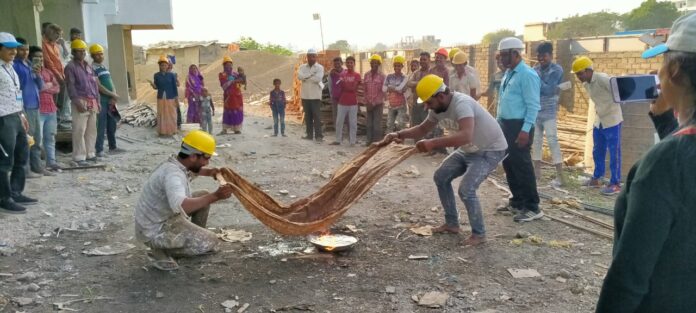Did we just see another sector’s jobs potential go out of the window? Not yet, but it is bound to happen some time in the foreseeable future. Given the high employment potential of the real estate sector, growth here is critical for creating jobs, even if they are not of a permanent nature. However, given the pace at which technology is replacing human labour in many areas, real estate and construction could not have missed the trend, especially given the high costs of land in urban areas.
By R Jagannathan
Early this month, Larsen & Toubro (L&T) constructed a 12-storey house under the PM Awas Yojana’s mass housing scheme in just over three months (96 days to be exact) in Navi Mumbai. The job was executed for Cidco, the Maharashtra government’s mass housing and satellite cities developer. Ninety-six tenements were built by producing nearly 2,000 precast elements of the superstructure and architectural finishes in factory-controlled conditions. This included mechanical, electrical and plumbing works over a 64,000 feet built-up area.
In December 2020, L&T built its first 3D-technology-driven two-storey home in 106 hours at its factory in Kanchipuram, Tamil Nadu; and a few months ago, it delivered a seven-storey flight control system integrator centre for the Defence Research and Development Organisation in 45 days.
While it will take time for such technology-led construction projects to go mainstream in the real estate industry, the very fact that seven-storey and 12-storey buildings can be built in two or three months implies that sooner than later these technologies will be adopted on a wide scale.
According to an advertisement released by L&T Construction today (29 July), the normal time taken to complete a floor is seven to 12 days (more, in the case of most builders who use lower technology), but L&T managed to reduce the cycle time to just three days. And its factory can produce one floor with eight flats for mass housing in just one day.
The rise of technology is a huge boon for mass housing (or housing in general), where one of the biggest cost elements — apart from land and materials — is finance. Delays raise costs as much as materials inflation. Now, technology has shortened the working capital cycle by speeding up the building process. Houses can now be substantially built inside large factories.
India is losing the battle for creating more employment in one of the sectors with the highest potential for it. The only way to deal with the challenges of greater automation in building and road construction is to speed up reforms in the real estate sector, especially land. If that happens, home prices even in big cities can crash, creating more jobs in the medium term as a building boom happens.
During the Covid-19 pandemic, when migrant labour fled back to rural homes, many construction projects suffered due to the lack of skilled and semi-skilled labour. L&T has demonstrated that this shortage will no longer be able to cripple or delay housing projects.
Technology does not always destroy jobs; what it does is polarise skill requirements, with demand for high skills raising wages at the top end, while low-end jobs proliferate at lower wages because technology now makes every job easier to do.
For example, once upon a time, we needed highly skilled carpenters to do our furniture. Today, a lot of the furniture is designed on computers and mass produced in computer-controlled factories, where engineers and software developers rule the roost. At the delivery end, you only need people who can screw wood and metal parts together to assemble furniture, a low-skill requirement that can be learnt in weeks. The furniture business has been IKEA-ised just as the mobility business has been Uber-ised.
Now, real estate will see this same polarisation of skills, with only finishing work in homes requiring lower-skill assemblers and quality checkers. This essentially means job skills and wages will be lower at the mass end of real estate work.
Jobs may not get scarcer, but their quality and income-generating potential will be impacted.
This article first appeared in www.swarajyamag.com and it belongs to them.












